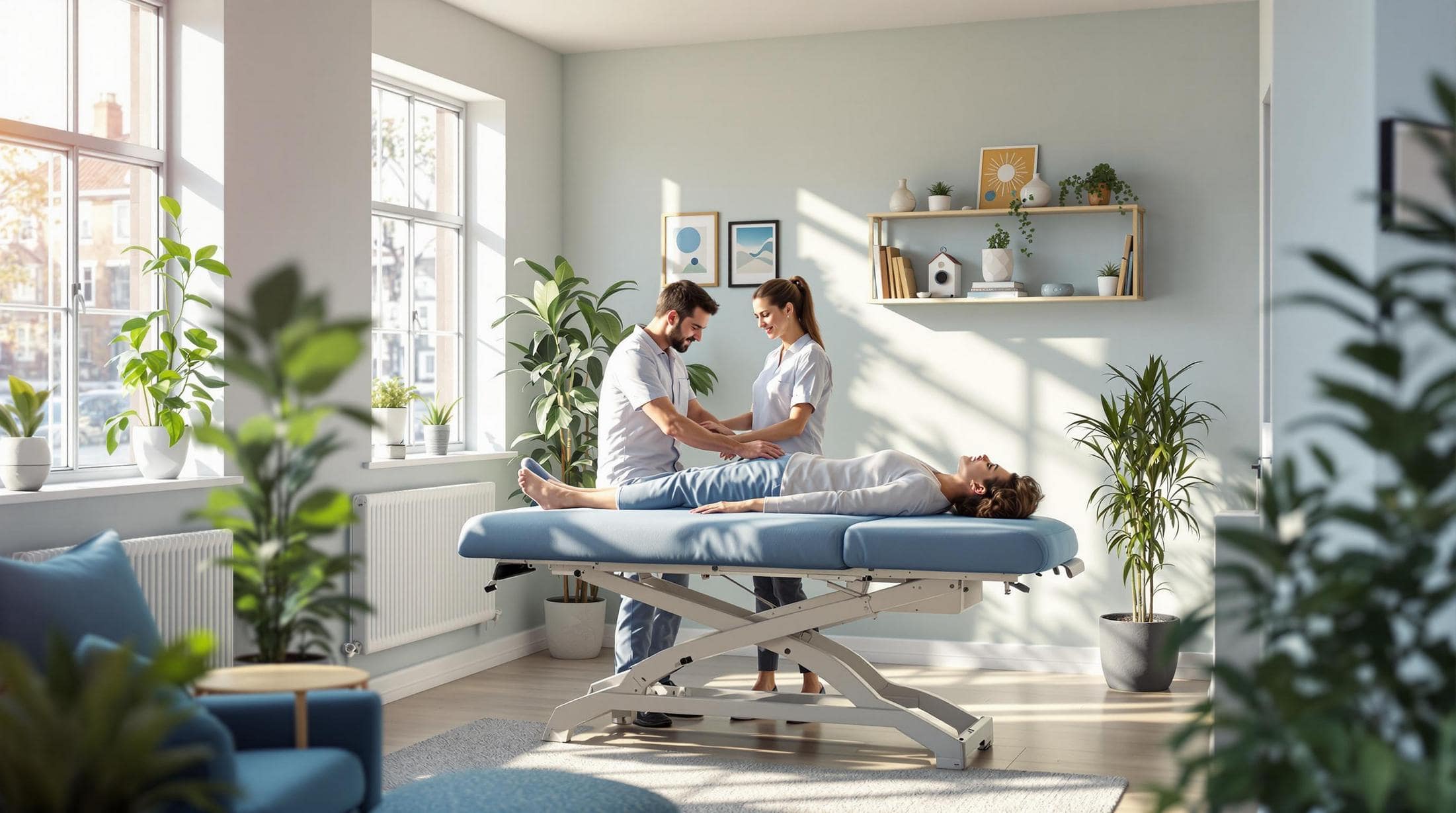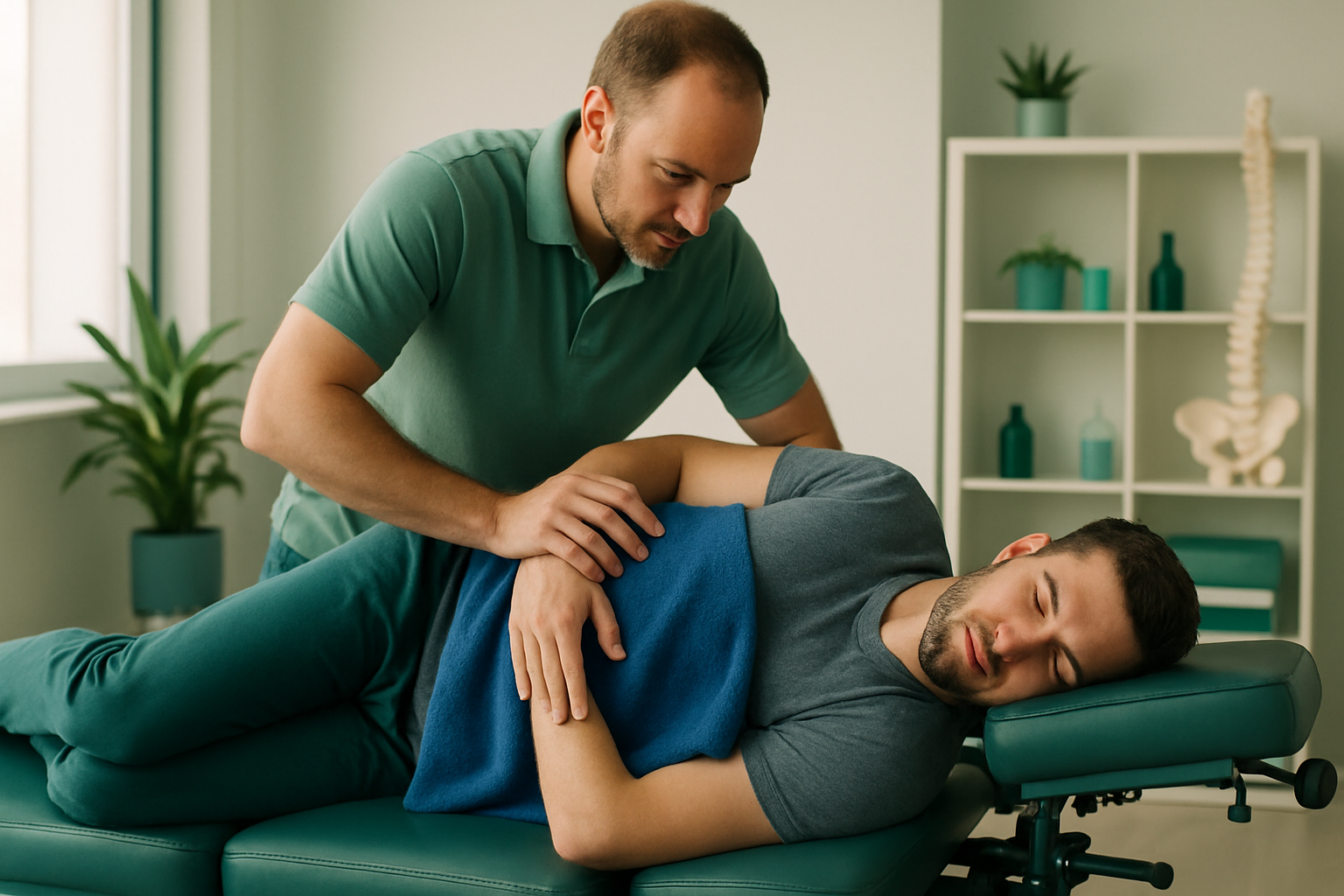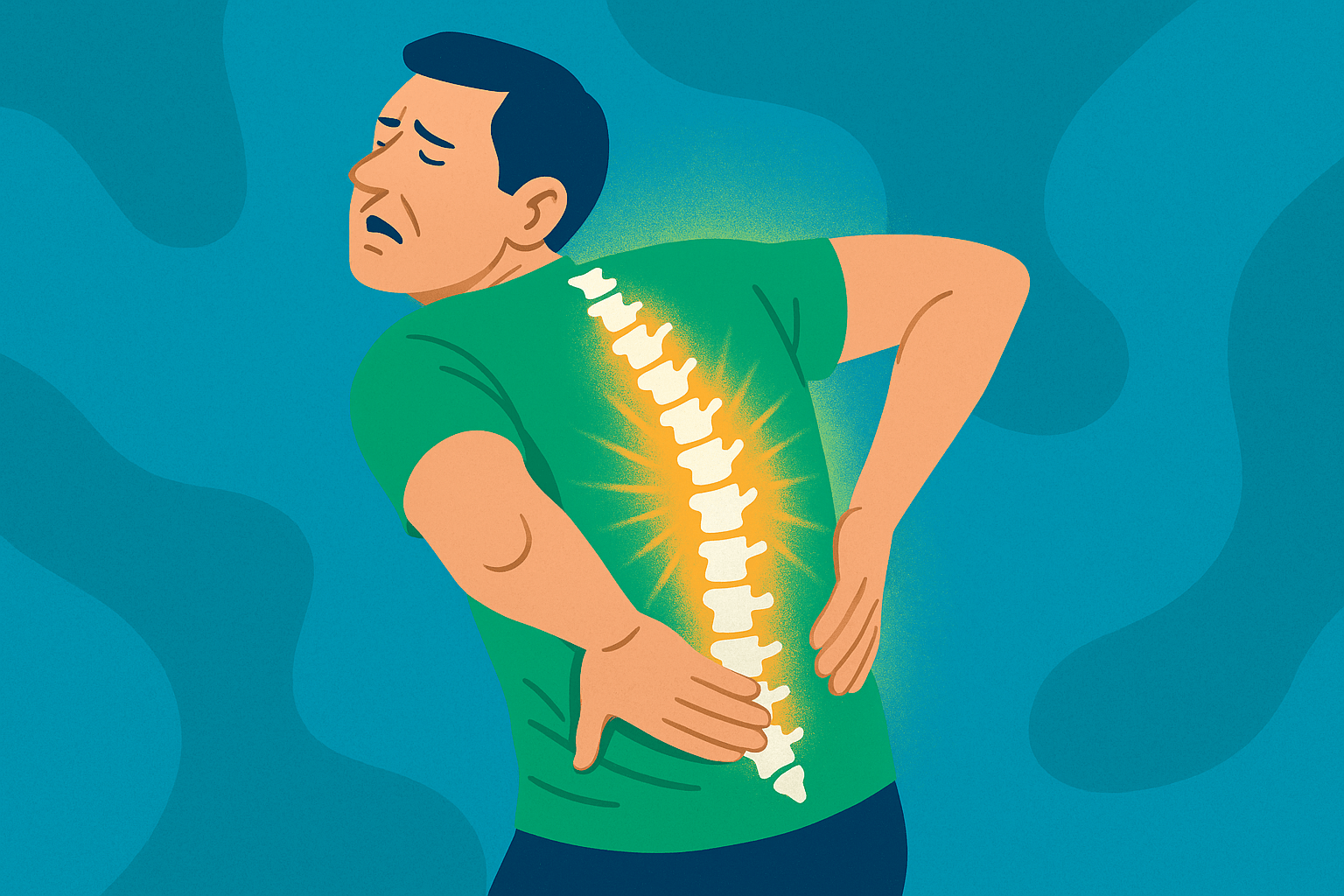Good posture isn’t just about standing tall — it’s about the entire chain of alignment that starts at your feet and ends at your spine. Every step you take influences how your body balances, distributes weight, and maintains stability. When your foundation is off, the rest of your body compensates, leading to pain, fatigue, and long-term structural issues. Understanding postural alignment from the ground up is key to preventing chronic discomfort and maintaining a healthier, more balanced body.
Jump To:
TLDR Quick Guide
- Postural alignment begins with your feet — they determine how pressure travels through your joints.
- Footwear matters: ill-fitting or worn-out shoes can cause imbalance and misalignment.
- Proper alignment reduces stress on muscles, ligaments, and the spine.
- Small corrections at the base (feet, ankles, knees) can improve whole-body posture.
- Professional posture correction treatments help retrain your body for long-term balance.
The Foundation of Postural Alignment
The feet are your body’s structural base, absorbing impact and stabilizing each movement. When arches collapse or pronation occurs, the imbalance doesn’t stop at your feet — it travels upward through the knees, hips, and spine. Proper alignment means your joints stack naturally, allowing the spine to maintain its ideal curvature and reducing unnecessary strain.
How Poor Foot Mechanics Affect the Spine
If one foot turns inward or bears more weight, it tilts your pelvis and forces the spine to adjust. Over time, this compensation can lead to lower back pain, uneven shoulders, and even neck tension. By correcting the base, posture can realign naturally without excessive muscular effort.
The Role of Footwear in Alignment
Shoes influence how your feet strike the ground and how your weight is distributed. High heels, flat soles, or worn-out insoles can alter your walking mechanics, creating long-term posture issues. Selecting footwear with proper arch support, cushioning, and balance can help prevent misalignment before it begins.
What to Look for in Supportive Shoes
- Arch Support: Keeps the foot’s structure stable and balanced.
- Heel Cushioning: Reduces impact and helps prevent spine shock absorption issues.
- Proper Fit: Ensures even weight distribution and natural movement.
How the Body Compensates for Misalignment
When your foundation is off, your body naturally adjusts to keep your eyes level and maintain balance. These compensations might seem harmless at first but often result in chronic strain and muscular fatigue. Misalignment can even affect breathing, digestion, and athletic performance by throwing off the body’s symmetry.
The Chain Reaction
A misaligned foot → rotated knee → tilted pelvis → curved spine → strained neck and shoulders.
Correcting this chain starts by addressing the foundation, allowing the body to reset into a more efficient, pain-free posture.
Professional Support for Postural Alignment
Specialized care, such as Advanced BioStructural Correction™ (ABC), focuses on restoring natural body balance without forcing muscles to hold unnatural positions. Clinics like Upright Posture use this technique to correct long-term structural misalignments safely and effectively. Through gentle adjustments and education on proper movement, clients often see improvements in pain relief, flexibility, and confidence in posture.
Key Takeaways
- It starts from the feet: True postural alignment begins with proper foot positioning and support.
- Footwear matters: Unsupportive shoes can lead to a chain of imbalances up the body.
- Compensation causes pain: When one part of the body misaligns, others strain to adapt.
- Professional correction helps: Treatments like ABC realign the body naturally from the ground up.
- Consistency is key: Maintaining alignment requires good habits, supportive footwear, and regular check-ins.
FAQs
What is postural alignment, and why is it important?
Postural alignment refers to how your body’s bones, muscles, and joints are positioned for optimal balance and function. When aligned correctly, your body moves efficiently and avoids unnecessary strain. Poor alignment can lead to fatigue, joint pain, and chronic injuries over time.
How do my shoes affect my posture?
Shoes influence how your feet absorb impact and balance your weight. Worn-out or unsupportive footwear can tilt your foundation, causing a ripple effect up through your knees, hips, and spine. Replacing shoes regularly and choosing proper support helps maintain natural alignment.
Can posture correction improve back and neck pain?
Yes, correcting posture often reduces or eliminates chronic pain caused by compensation patterns. When the spine and surrounding muscles are properly aligned, stress on nerves and joints decreases significantly. Many patients experience noticeable relief after consistent posture therapy or chiropractic care.
How can I tell if my posture is misaligned?
Common signs include uneven shoulders, recurring back or neck tension, and one foot turning out more than the other. You might also notice fatigue from standing or walking for long periods. A posture assessment by a professional can accurately diagnose the root cause.
What treatments help restore proper postural alignment?
Treatments such as Advanced BioStructural Correction™ and targeted exercises can realign the body effectively. These approaches focus on restoring natural structure rather than forcing muscular control. Over time, they retrain the body to maintain its correct posture automatically.






